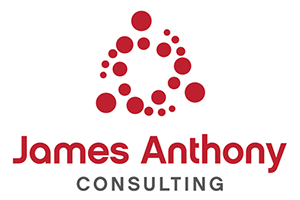Project Blueprint for Website Development
A website development project is a multi-faceted endeavour requiring thoughtful planning, execution, and continuous refinement. This blueprint will guide you through the key considerations and deliverables to ensure your website meets business objectives, delivers a seamless user experience, and supports growth.
1. Project Objectives and Scope
Define clear goals for the website:
What purpose will the website serve? (e.g., lead generation, e-commerce, content dissemination)
Who is the target audience? (e.g., demographics, behaviour, preferences)
What specific outcomes are you expecting? (e.g., increased traffic, improved conversions, reduced bounce rates)
Key scope considerations:
Number of pages and types of content (e.g., blog, product pages, case studies)
Features and functionality (e.g., login portals, search, forums)
Geographic and language considerations (e.g., multilingual support)
2. Core Website Structure and Content
Information Architecture:
Define the sitemap: Include core pages like Home, About, Services, Blog, and Contact.
Plan navigation: Ensure it’s intuitive and supports user journeys.
Content Strategy:
Identify content types: Static pages, dynamic content, multimedia.
Plan for SEO-optimised content: Ensure keywords, meta descriptions, and alt tags are defined.
Search Functionality:
Determine the search scope: Full-site search or specific sections.
Implement advanced search filters for product/service categories, blog posts, etc.
3. Design and User Experience (UX)
User Experience (UX):
Define user personas and map their journeys.
Ensure mobile-first design and cross-device responsiveness.
Prioritise accessibility (WCAG compliance).
Visual Design:
Develop a style guide for colours, fonts, and imagery.
Plan for consistent branding across all pages and media.
Interactivity:
Define dynamic elements (e.g., sliders, forms, chatbots).
Plan for interactive experiences (e.g., calculators, quizzes).
4. Technical Considerations
Hosting and Performance:
Choose a hosting provider that aligns with traffic expectations and supports scalability.
Plan for performance optimisation (e.g., CDN, caching, image optimisation).
Backend Development:
Select a content management system (CMS) like WordPress, Drupal, or a custom-built platform.
Ensure APIs are integrated for third-party services (e.g., CRMs, payment gateways).
Database Design:
Structure databases efficiently to support fast query responses.
Plan for future scalability.
Search Engine Optimisation (SEO):
Implement technical SEO: XML sitemaps, robots.txt, and schema markup.
Define canonical tags to prevent duplicate content.
5. Analytics and Tracking
Setup and Integration:
Implement tools like Google Analytics 4, Hotjar, or Mixpanel.
Configure Google Tag Manager for flexibility in adding tags.
Tracking Metrics:
Define KPIs such as conversions, bounce rates, time on page, and goal completions.
Set up analytics attribution models (e.g., first-touch, last-touch).
Advanced Features:
Implement scroll-depth tracking for content engagement.
Plan for UTM parameters to track marketing campaigns.
6. Security and Compliance
Security:
Use HTTPS with SSL/TLS encryption.
Plan for secure authentication systems (e.g., two-factor authentication).
Compliance:
Adhere to GDPR/CCPA requirements for data protection.
Add a clear privacy policy and cookie consent banner.
Monitoring:
Integrate regular vulnerability scanning and automated security patches.
7. Testing and Quality Assurance
Functional Testing:
Test all interactive elements (forms, buttons, navigation).
Verify that integrations with third-party systems (e.g., payment gateways) work seamlessly.
Performance Testing:
Test site speed using Google PageSpeed Insights and GTmetrix.
Conduct load testing to ensure performance under high traffic.
Cross-Browser Testing:
Verify compatibility with major browsers (Chrome, Safari, Firefox, Edge).
Test on various devices, including smartphones and tablets.
Accessibility Testing:
Use tools like Axe or WAVE to check for accessibility compliance.
8. Post-Launch Considerations
Training and Handover:
Provide training for your team to manage the CMS.
Create documentation for managing updates, troubleshooting, and publishing content.
Maintenance and Updates:
Plan for regular backups and updates to plugins or CMS core.
Define a strategy for continuous performance and security monitoring.
Continuous Improvement:
Monitor analytics and user feedback to identify improvement areas.
A/B test new features to optimise user engagement.
9. Advanced Features and Future Scalability
E-Commerce Functionality:
Plan for payment gateways, product catalogues, and inventory management.
Integrate abandoned cart recovery and upsell mechanisms.
Search and Recommendation Engines:
Implement AI-driven recommendations based on user behaviour.
Personalisation:
Enable user-specific content and experiences (e.g., location-based recommendations).
Scalability:
Plan for traffic surges with autoscaling hosting solutions.
Integrate cloud-based services for global content delivery.
Final Thoughts
A website development project is a living process requiring detailed planning, execution, and ongoing optimisation. By considering these advanced elements, your website can become a powerful tool that drives your business forward. At James Anthony Consulting, we’re here to guide you through every step of the journey. Contact us today to get started!

